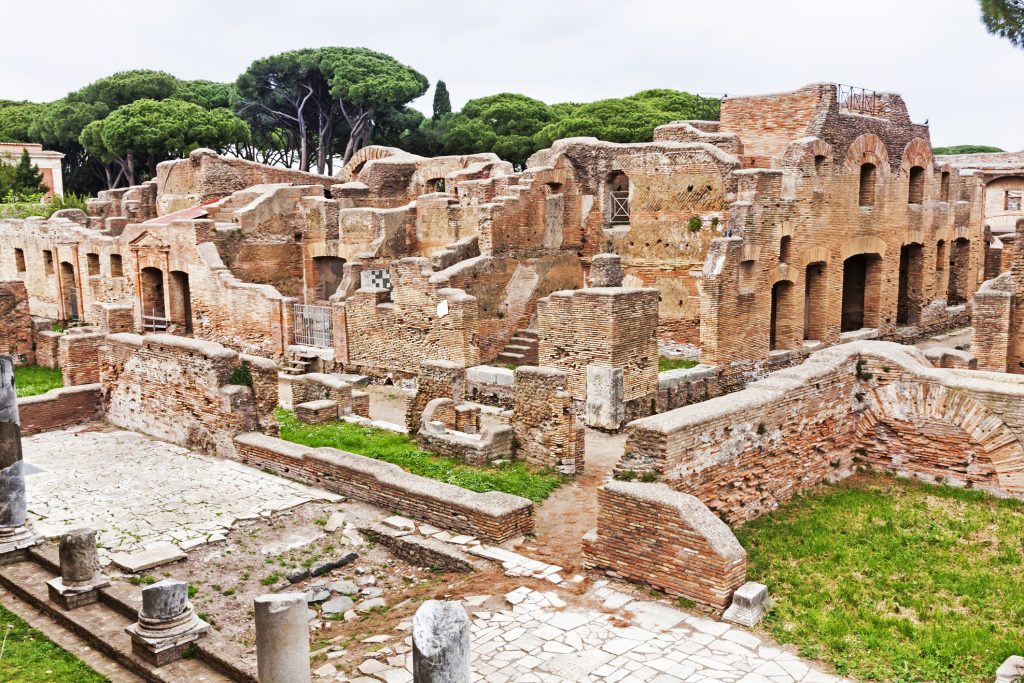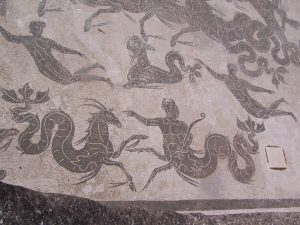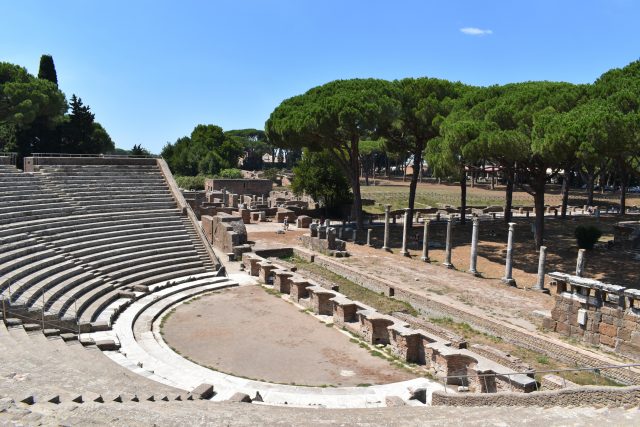Ostia Antica once was Rome’s main seaport, a pivotal harbor for trade and warfare during the empire’s peak.
Today it just may be the best ancient attraction you’ve never heard of.
Like the celebrated ruins of Pompeii, much of Ostia Antica is still standing. But it wasn’t a volcano that sealed the city’s fate as a remarkably well-preserved site.
Ostia Antica was abandoned in 476 A.D. after the Roman Empire fell. In the centuries that followed, deposits of silt piled up until the entire city was buried (and then some). The once-waterfront locale is now 2 miles away from the sea.
The silt served as a Ziploc bag for Ostia Antica, preserving many of its buildings, roads, mosaics and frescos. And today, you can still sit in the stands of its amphitheater, climb the stairs of ancient apartment buildings, and breeze through restaurants, baths and workplaces that defined a way of life.
Maybe best of all, unlike Pompeii, there are barely any tourists around for most of the year.

Mid-Rise Antiquity
Between 75,000 and 100,000 people called Ostia Antica home during its peak in the second and third centuries AD. It was mainly a mercantile and working-class town filled with laborers, in contrast to Pompeii’s tony tone.
As such, some of Ostia’s most well-known ruins are housing. Most of its population lived in “insulae,” the world’s first apartment buildings. While these were built to house the majority of the city’s working class, some also include luxury apartments, complete with surprisingly modern floorplans, running water and kitchens.
You can still climb the narrow stairs of some of these buildings or check out the hollowed-out taverns located on the ground floor. In essence, Ostia was a city dominated by (what we’d call today) mixed-use, mixed-income, mid-rise commercial real estate.
Taken together, the city provides valuable insight into the everyday lives of the empire’s middle-class. Where Pompeii was a playground for the wealthy, Ostia was down to earth, a true bedroom community.
And true to its nature, there are few if any velvet ropes cordoning off the ruins. You can climb them, sit on them, interact with them in a way you can’t in most ancient sites.
Site Insight
It’s not just architectural style that gave the ruins their renown. There’s plenty of historical substance too.

The city is home to the oldest known synagogue in Europe, and one of the oldest in the world found outside of Israel. Unearthed in 1961, the Ostia Synagogue was built around 45 A.D. and actively served as a synagogue right up until the fifth century A.D.. And for Catholics, Ostia is notable for being part of St. Augustine’s journeys and also as the city where his mother, St. Monica, died.
Ostia’s oldest structures date back to the third century B.C., including the ruins of a military camp. Over the years, it witnessed civil wars, pirate sackings, political kidnappings, was burnt down and rebuilt then torn down again.
The statesman/orator Marcus Tullius Cicero provided the city with protective walls. Tiberius built its first forum. Julius Caesar expanded the city’s port and canals to secure the transport of grain to Rome. Claudius built its harbor while Trajan built a bridge across it.
And obviously, much of it was built to last. The city’s 2,000 year-old amphitheater still hosts some cultural celebrations today.
Getting to Ostia Antica
The Rome – Lido railway is the main transportation to and from Ostia and the center of Rome, a ride that takes about 35 or 40 minutes. Once there, local busses will get you where you want to go.

You’ll want to avoid Ostia Antica during summer months as a lot of native Romans vacation at its beaches. Otherwise, you can stroll through the city’s original curbed pavement without too much competition.
Mainly, the best advice is to take comfortable footwear because if you want to see it all – and it can all be seen in one day – you’ll have to hoof it.
But in the future it may be impossible to see Ostia Antica all in one day. Archaeologists estimate nearly two-thirds of the town still hasn’t been excavated.
This city of ghosts may still have a few more secrets to tell hidden just below the surface.
Experiencing wanderlust? Visit AAA.com/Travel for plenty of Italian tour info and inspo!
Where’s your favorite “best-kept secret” spot? Tell us in the comments below!
5 Thoughts on “Ostia Antica: The Best-Kept Secret in Italy?”
Leave A Comment
Comments are subject to moderation and may or may not be published at the editor’s discretion. Only comments that are relevant to the article and add value to the Your AAA community will be considered. Comments may be edited for clarity and length.


















Tivoli gardens Hadrian’s cilla
Thanks for this tip. I had only vaguely heard of Ostia Antica. The best ancient site I have seen is Akrotiri on Santorini. It is an active archeological dig but they let you see a lot, under the cover of a roof, which is odd but necessary.
I first discovered Ostia Antica in 1979, while living in Milano and working for 3 weeks in Rome. I spent the day there exploring the site. Then in 2004 I took my wife to visit Ostia Antica. I fine the site better than any in Rome and can’t wait to go back when more is uncovered. Be careful as they are closed on Mondays.
Good article. But the Rome-Lido railway has a direct stop at Ostia Antica, in walking distance of the entrance. No buses are needed!
Thanks for the tip Stephen, I must have gotten off at the wrong stop!